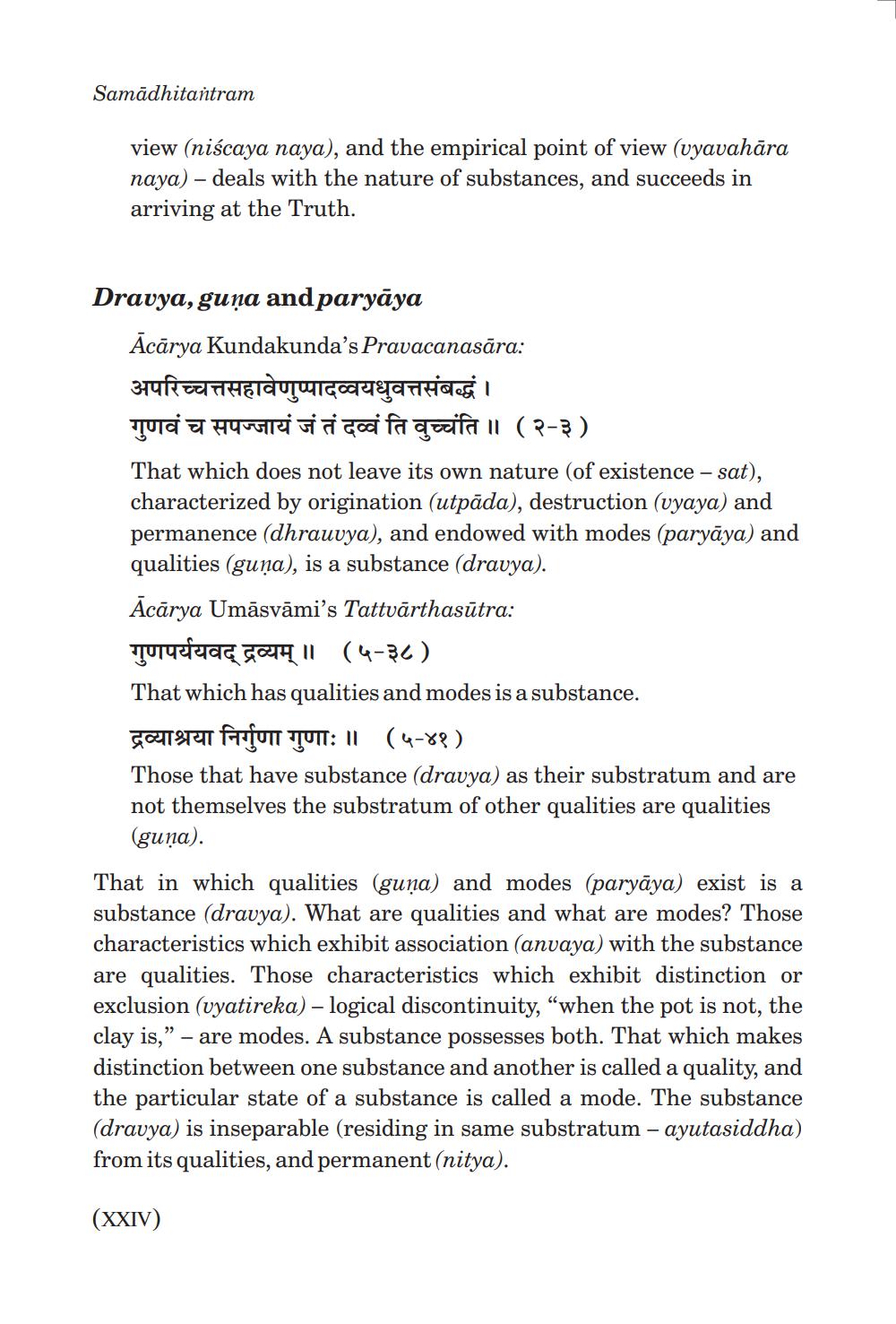________________
Samādhitantram
view (niscaya naya), and the empirical point of view (vyavahāra naya) - deals with the nature of substances, and succeeds in arriving at the Truth.
Dravya, guņa and paryāya
Ācārya Kundakunda’s Pravacanasāra: अपरिच्चत्तसहावेणुप्पादव्वयधुवत्तसंबद्धं । qura a hyvillig a gooi fa queifa 1 (2-3) That which does not leave its own nature (of existence - sat), characterized by origination (utpāda), destruction (vyaya) and permanence (dhrauvya), and endowed with modes (paryāya) and qualities (guņa), is a substance (dravya). Ācārya Umāsvāmis Tattvārthasūtra: quruetuce 5014 11 (4-36) That which has qualities and modes is a substance. Gauten FANGUI TUTT: 11 (4-88) Those that have substance (dravya) as their substratum and are not themselves the substratum of other qualities are qualities
(guņa). That in which qualities (guņa) and modes (paryāya) exist is a substance (dravya). What are qualities and what are modes? Those characteristics which exhibit association (anvaya) with the substance are qualities. Those characteristics which exhibit distinction or exclusion (vyatireka) – logical discontinuity, “when the pot is not, the clay is,” - are modes. A substance possesses both. That which makes distinction between one substance and another is called a quality, and the particular state of a substance is called a mode. The substance (dravya) is inseparable (residing in same substratum - ayutasiddha) from its qualities, and permanent (nitya).
(XXIV)




